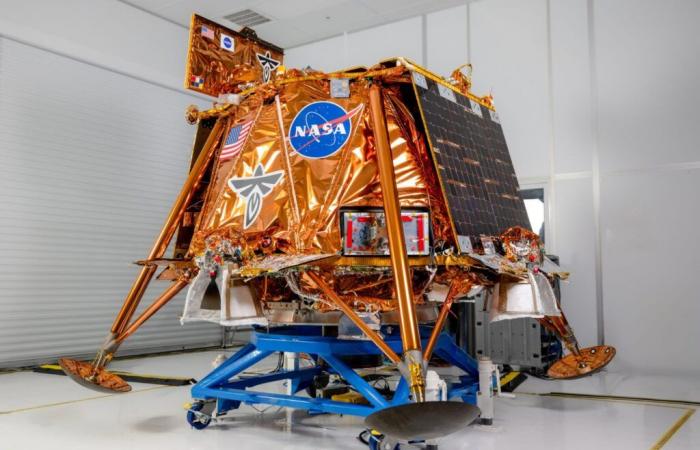A 6-day firing window will allow SpaceX to send a lunar lander to the Moon. Next January, Elon Musk’s company will work on a NASA mission including a module developed by Firefly Aerospace called Blue Ghost. The latter has completed its environmental testing phase, which required it to go through extreme heat experiments, which the module will experience on the lunar surface, once exposed or not to sunlight.
Tests of Firefly Aerospace’s Blue Ghost lunar module took place at NASA’s Jet Propulsion Laboratory (JPL) in California in mid-October, the same center that handles communications with the Voyager 1 and Voyager probes. 2. Now, the lunar lander is ready to go to the Kennedy Space Center in Florida, to prepare for launch on the launch pad of Launch Complex 39A. It will then be mounted on a Falcon 9 rocket. The journey will take 45 days between the Earth and the Moon.
No astronauts will board the Firefly Aerospace module or the SpaceX rocket. The mission consists of sending different payloads to carry out experiments. Hence the presence of NASA, the American space agency, in the equation. Among these, there will be a new electrostatic system to repel harmful dust present on the Moon. The equipment was developed by NASA and its development took 20 years.
Its full-scale test is of paramount importance, because the system will replace the old electric curtain concept, designed in 1967. NASA’s new electrodynamic dust shield (EDS) technology a combination of electrodes and electric fields to capture and remove dust from objects such as thermal radiators, solar panels, camera lenses, spacesuits, boots and helmet visors.
“Lunar regolith dust can get into joints and seals, into hatches and even into habitats, which can cause many problems for spacecraft and astronauts”declared Charles Buhler, principal investigator at the Electrostatics and Surface Physics Laboratory at NASA’s Kennedy Space Center in Florida, in a press release published last April. The system will be used for these private missions to the Moon, but also later on the Artemis program.
After Intuitive Machines, Firefly Aerospace heads to the Moon
Among the other equipment carried by Blue Ghost and SpaceX’s Falcon 9 rocket towards the Moon, there will also be a “vacuum cleaner” called Lunar PlanetVac, developed by Honeybee Robotics, which will sample lunar dust for later study . One of the main works consists of studying the reaction of the lunar surface to contact with module exhaust plumes. A study in advance, certainly, of future Artemis missions where the astronauts’ lunar lander will leave the Moon towards the Orion spacecraft left in orbit.
Lunar missions of this type, with NASA, will continue in parallel with the preparation of the Artemis program. The space agency groups them under the initials of CLPS (for Commercial Lunar Payload Services) and continues to award millions of dollars to private companies for their lunar landers.
Thus, alongside Firefly Aerospace, the agency also invested $116.9 million in Intuitive Machines to transport six of the agency’s scientific instruments to the lunar south pole in 2027 aboard the One of the company’s robotic lunar landers, like Odysseus, traveled to the Moon last February for the first time, the first American lunar trip since 1972.
???? To not miss any news from 01net, follow us on Google News and WhatsApp.
Source :
Space.com






